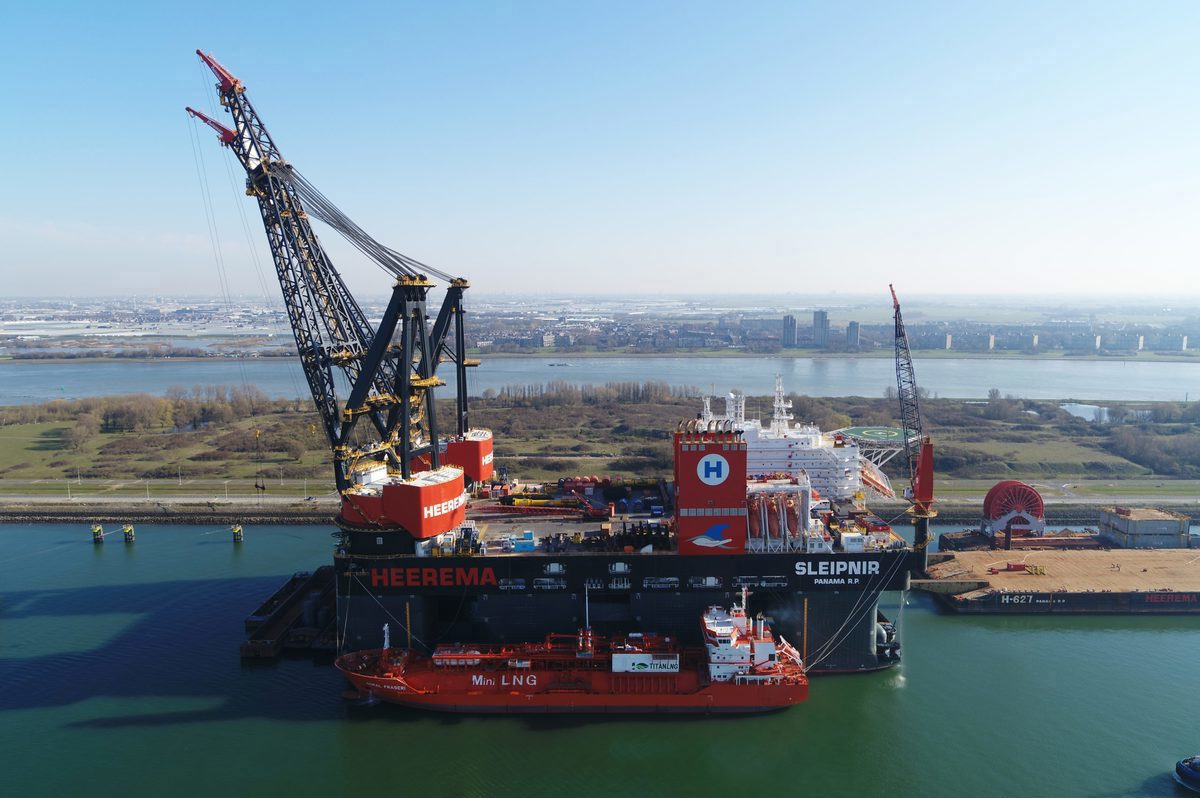LNG Bunker Snapshot: Massive rise in Singapore price driven by heatwave
Rotterdam’s LNG bunker price has declined slightly amid ample European gas storage, while Singapore’s price has surged due to a rise in the underlying gas benchmark and higher gas demand from the power sector.
 PHOTO: A bunker vessel delivering LNG to a semi-submersible crane vessel in Rotterdam. Titan
PHOTO: A bunker vessel delivering LNG to a semi-submersible crane vessel in Rotterdam. Titan
Changes in weekly LNG bunker prices:
- Rotterdam down by $4/mt to $766/mt
- Singapore up by $102/mt to $885/mt
Rotterdam
The LNG bunker price in Rotterdam has edged down by $4/mt to $766/mt in the past week. The port's benchmark has tracked the downward movement in the front-month NYMEX Dutch TTF Natural Gas contract.
This small decrease occurred despite ongoing geopolitical tensions between Ukraine and Russia, which might typically push prices higher due to supply concerns.
The key factor contributing to the price drop is the high level of gas storage across Europe. As of now, storage is at 87.6% of capacity, well above the five-year average of 79.5% for this time of year. This gas surplus acts as a buffer against potential supply disruptions, helping to keep prices in check, ING’s Warren Patterson said.
While the Sudzha gas-intake station in Russia’s Kursk region remains operational, its reduced flow represents a fraction of its full capacity. However, the high storage levels across the EU mean that immediate supply concerns are less pressing, allowing prices to ease slightly.
Singapore
Singapore's LNG bunker price has shot up by $102/mt to $885/mt, driven by JKM contract dynamics and weather-related demand.
The increase follows the rollover of the NYMEX Japan/Korea Marker (JKM) contract from September to the higher-priced October contract, which lifted the JKM benchmark and pushed up LNG bunker prices in the port.
Adding to the upward pressure are forecasts of above-average temperatures across East and Southeast Asia. As temperatures soar, the demand for gas-fired electricity to power the cooling systems is expected to spike.
In South Korea, for instance, the Korean Meteorological Administration anticipates a 60% chance of above-normal temperatures from late August to early September, while Japan faces a similar outlook, with up to a 70% probability of continued heat, Rystad Energy said.
Further exacerbating the situation is the reduced availability of nuclear power in South Korea.
Unplanned maintenance extensions at the Wolsong nuclear plant have left only 18 of the 21 reactors operational. Consequently, the country's electricity peaked at 94.6 gigawatts (GW) on 13 August, further increasing reliance on LNG for power generation, Rystad Energy added.
By Debarati Bhattacharjee
Please get in touch with comments or additional info to news@engine.online





